Research project
More than the Story
Considering Mesoamerican Precolonial books as material objects
- Duration
- 2012 - 2016
- Funding
-
 NWO Science4Arts - Shedding Light on Endangered Mutual Heritage
NWO Science4Arts - Shedding Light on Endangered Mutual Heritage
- Partners

Short abstract
State of the art technology, historical sources, and experimental reproduction is combined to understand the composition, production and use of some of the most rare documents in the world.
Research question
How does the materiality of the Precolonial Mesoamerican codices influence their perception?
Project description
Social relevance
Less than 20 precolonial books survive from the Americas. Today they form important treasures of a number of libraries and museums in Europe. More importantly, for many contemporary indigenous people they form the only access to their lost historical narratives.
Their material composition is poorly understood. Understanding their material leads to better conservation and may protect these treasures for the future. The possibility of recovering more information from the palimpsest is of great historical value.
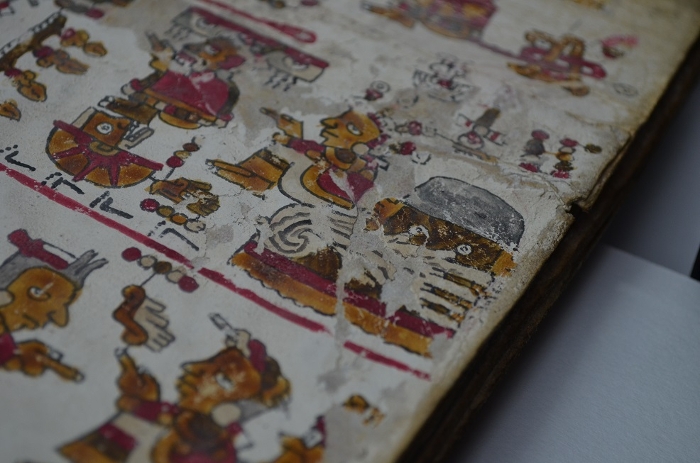
Scientific relevance
These documents give insight into the complex cultures that lived in this area. Most of the information gained from them is inaccessible through others means. Names of ancient kings and queens, information on conflicts and alliances between cities and the rituals performed to specific deities all are impossible to excavate, but are encapsulated in these books.
Furthermore understanding how these codices were made helps to form an understanding of the interregional trade networks that were in place and were used to import the exotic materials found in these books.
Why Leiden University?
Leiden is home to one of the biggest research groups focussing on the archaeology of the Americas in Europe, with special focus on Mexico, Nicaragua and the Caribbean.
The close collaboration of the Technical University of Delft, the RCE and the University of Leiden allows for experts in the field of cultural studies and those in the field of technology to join forces.
Such interregional and interdisciplinary cooperation allows synergetic projects to flourish.
Material & Methods
The way in which the question is approached is by combining non-invasive high tech investigation with historical sources, archaeological objects and experimental replication to try and understand the creation process. Furthermore historical sources containing tribute lists of the Aztec empire, as well as geological and ecological data can be used to indicate what products came from where. Combining these sources it is possible to reconstruct a whole network of interactions that underlie the creation of the codices.
The experimental replication not only gives better insight into the full production process but also allows the creation of samples with which all sorts of invasive experiments can be done to better understand the behaviour of these materials. Artificial aging is one example which allows the study of deterioration processes of the materials used in precolonial times.
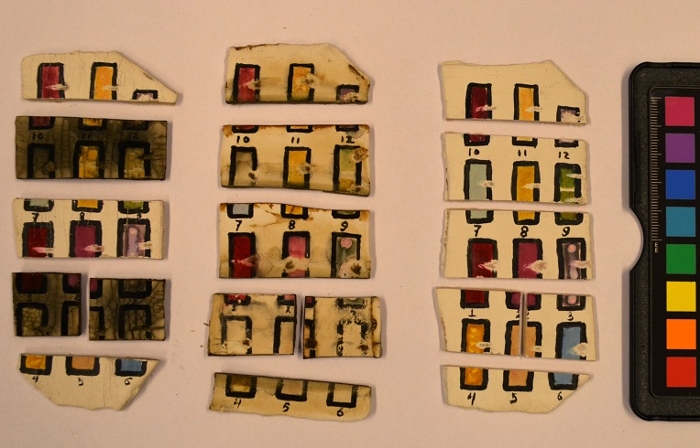
One of these books, the Codex Añute, contains a hidden layer of images underneath the gesso writing surface. One of the objectives in this research is the recovery and preliminary interpretation of these images. RTI, Hyperspectral and Infrared Imaging as well as the newly developed Photothermal Tomogrpahy have all been applied to this codex in order to better understand the surface and subsurface features of this document.
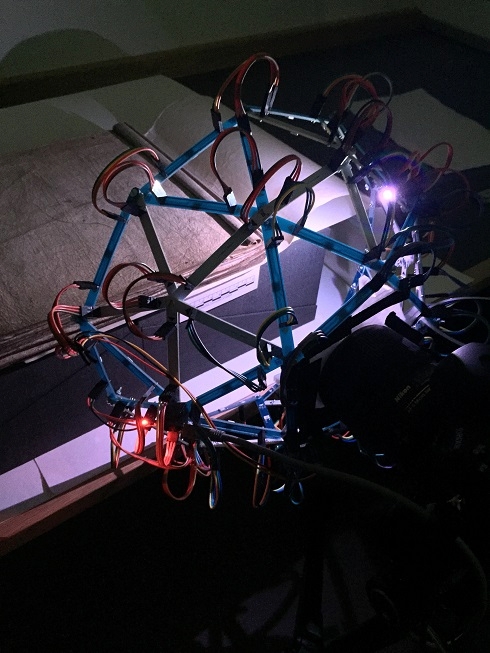
Results & Conclusions
It has been possible to make full reconstructions of selected parts of codex Añute (Selden), Tonalpouhqui (Vaticanus B) and Ñuu Tnoo-Ndisi Nuu (Bodley) using materials and procedures as they would, or at least could, have been used in precolonial times. Since identification of some organic materials is still impossible without sampling it is however still impossible to guaranty that these are the exact procedures used. The reconstructions were partially made at the Msueum Volkenkunde in an open workshop. This allowed the general public to come face-to-face with this extraordinary material and try their own hand at writing in this script.
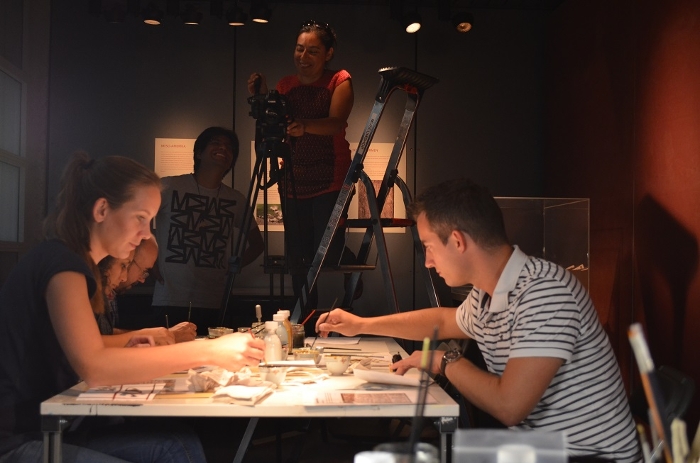
The palimpsest of the Codex Añute has been scanned with great success. RTI, hyperspectral, and Infrared are combined to give information about features laid bare during the 1950’s investigation. Hyperspectral Imaging is also able to detect the red coloured areas underneath eh gesso layer. Further interpretation of the scanning data with possible new scans in the future will certainly reveal more about this hidden text. What is clear now is that the text is a completely different one from that known from the front of the document
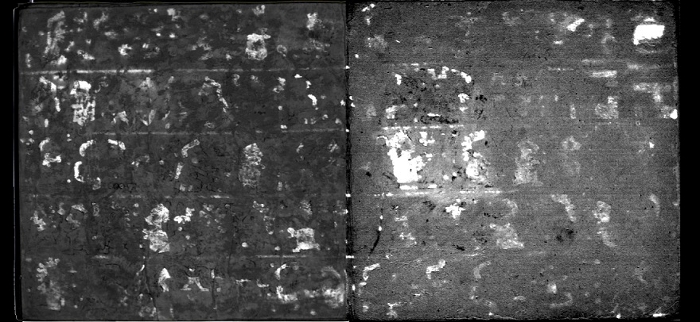
Follow-up
The reconstruction of the hidden images is only a first step in the interpretation of the palimpsest. Now that the applicability and value of the technique has been shown a complete overview of the palimpsests would first need to be made which would require more scans.
The reconstructions that have been made will be put on display in the museum Volkenkunde to give insight into long-term exposure of these documents under museum conditions. They will become part of an exhibit in that museum planned for the spring of 2016.
A video is being made that will show the entire reproduction process. This video will also (in part) be incorporated in the exhibit and will be accessible online.
